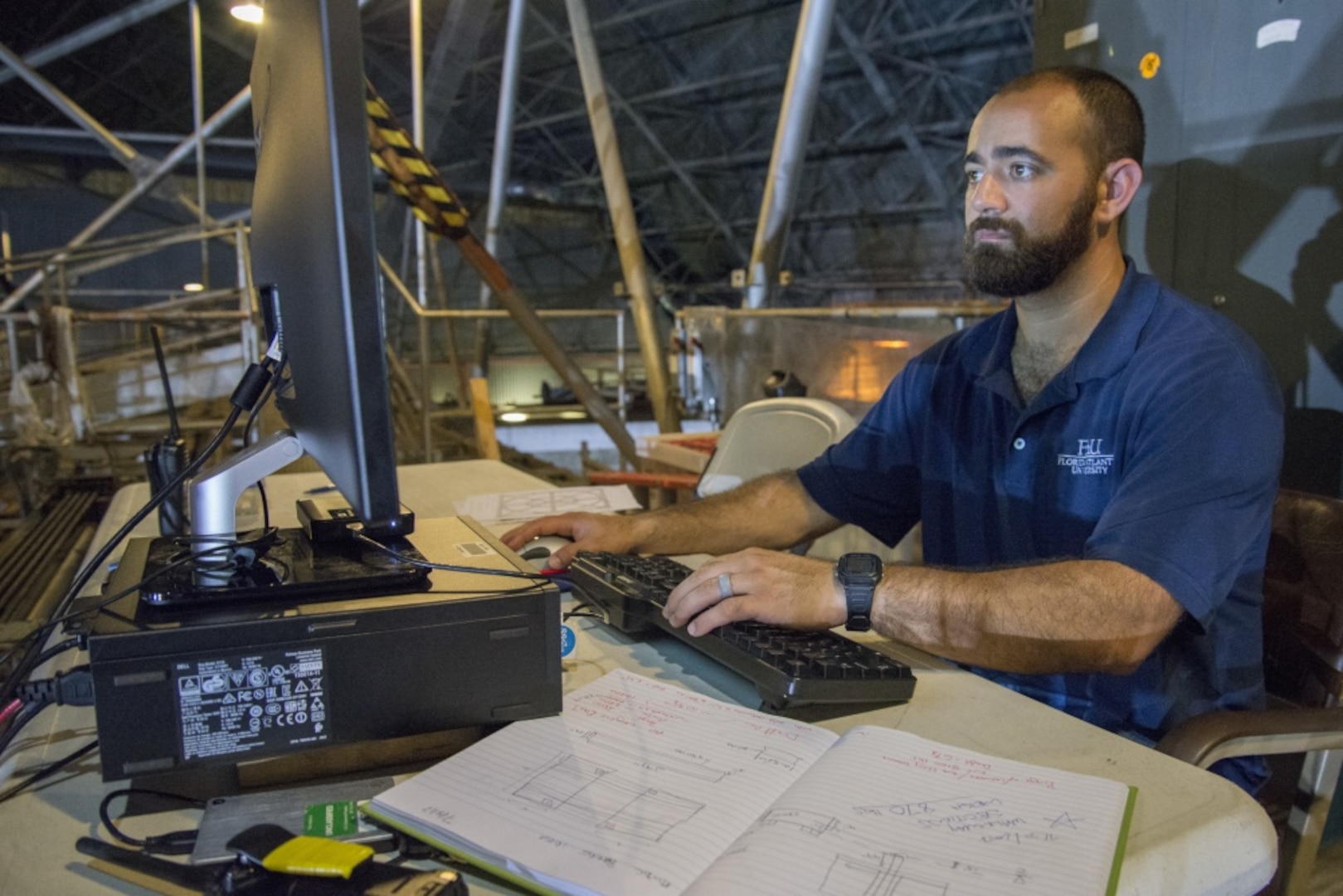Carderock, DOE Collaborate on Advanced Wave Energy Conversion Tests


Naval Surface Warfare Center Tests New Control Strategies for Wave Energy Conversion

Introduction
Naval Surface Warfare Center, Carderock Division engineers collaborated with partners from Sandia National Laboratories to test new control strategies for producing, converting, and gathering wave energy. The testing took place in the command’s Maneuvering and Seakeeping Basin in West Bethesda, Maryland, from July 24 to August 4.
Testing a Wave Energy Converter
The engineering team is currently testing a 1-ton wave energy converter (WEC) in the MASK, with a specific focus on control strategies to increase energy generation. According to Ryan Coe, a research engineer with Sandia’s Albuquerque facility, the goal of the project is to enhance the amount of electrical energy generated and collected by these wave energy converters. The team is exploring ways to control the dynamics of the device and increase its efficiency.
Previous Collaboration and Improvements
This collaboration builds upon previous work between Sandia and Miguel Quintero, an ocean engineer at Carderock. In 2016, they tested a WEC in the MASK and have since analyzed the data collected, designed new testing models, and improved the hardware to implement advanced control strategies.
Wide Range of Motion and Increased Power Generation
The WEC being tested can move in three degrees of freedom: heave, surge, and pitch. This allows for energy capture in various sea states. By applying a more complex and optimal controller, the team has been able to double the amount of power produced by the device in most sea states.
Knowledge Sharing and Collaboration
Carderock engineers, such as Dave Newborn, have shared their knowledge with DOE partners like Sandia and the National Renewable Energy Laboratory. This collaboration has been beneficial for all parties involved, allowing them to learn from each other and improve testing methodologies for wave energy conversion.
Advanced Power Strategies
Giorgio Bacelli, a research engineer with Sandia, along with Ryan Coe and Kevin Dullea, engineers from Sandia’s robotics department, bring different techniques from electronic systems, mobile phones, and aerospace engineering to complement Carderock’s expertise in ocean engineering. These advanced power strategies aim to draw more energy from the wave energy converter.
Applications for Navy and Marine Corps
While the long-term goal is to use wave energy and other renewable sources to power the U.S. electrical grid, the development of wave energy converters also has direct applications for the Navy and Marine Corps. Wave energy converters could potentially power naval offshore bases or autonomous systems, providing greater operational capacity.
Future Testing and Conclusion
Sandia plans to hold three rounds of testing in the MASK, with the final and most technically advanced round scheduled for later this year. The Department of Energy officials, including Alejandro Moreno, director for the Water Power Technologies Office, visited the testing site to witness the progress firsthand.
SDGs, Targets, and Indicators
-
SDG 7: Affordable and Clean Energy
- Target 7.2: Increase substantially the share of renewable energy in the global energy mix
- Indicator 7.2.1: Renewable energy share in the total final energy consumption
-
SDG 9: Industry, Innovation, and Infrastructure
- Target 9.4: Upgrade infrastructure and retrofit industries to make them sustainable, with increased resource-use efficiency and greater adoption of clean and environmentally sound technologies and industrial processes
- Indicator 9.4.1: CO2 emission per unit of value added
-
SDG 13: Climate Action
- Target 13.2: Integrate climate change measures into national policies, strategies, and planning
- Indicator 13.2.1: Number of countries that have integrated mitigation, adaptation, impact reduction, and early warning into primary, secondary, and tertiary curricula
Analysis
The article discusses the testing of wave energy converters (WECs) to increase energy generation and efficiency. Based on the content, the following SDGs, targets, and indicators can be identified:
SDG 7: Affordable and Clean Energy
The article addresses the goal of affordable and clean energy by focusing on increasing the amount of electrical energy generated and collected by wave energy converters. This aligns with Target 7.2, which aims to increase the share of renewable energy in the global energy mix. The article mentions the testing of a 1-ton wave energy converter (WEC) to improve control strategies and increase energy capture. The indicator 7.2.1, which measures the renewable energy share in the total final energy consumption, can be used to measure progress towards this target.
SDG 9: Industry, Innovation, and Infrastructure
The article also relates to SDG 9, which focuses on industry, innovation, and infrastructure. The testing of wave energy converters and the development of advanced control strategies align with Target 9.4, which aims to upgrade infrastructure and retrofit industries to make them sustainable. The article mentions the design of new testing models and hardware improvements to implement advanced controls. The indicator 9.4.1, which measures CO2 emissions per unit of value added, can be used to measure progress towards this target.
SDG 13: Climate Action
The article indirectly connects to SDG 13, which addresses climate action. By exploring wave energy as a renewable energy source, the article contributes to the integration of climate change measures into national policies and planning, as stated in Target 13.2. The article mentions the potential of wave energy converters to provide clean energy for naval off-shore bases and autonomous systems, which aligns with the target. The indicator 13.2.1, which measures the integration of climate change measures into curricula, can be used to measure progress towards this target.
Table: SDGs, Targets, and Indicators
| SDGs | Targets | Indicators |
|---|---|---|
| SDG 7: Affordable and Clean Energy | Target 7.2: Increase substantially the share of renewable energy in the global energy mix | Indicator 7.2.1: Renewable energy share in the total final energy consumption |
| SDG 9: Industry, Innovation, and Infrastructure | Target 9.4: Upgrade infrastructure and retrofit industries to make them sustainable, with increased resource-use efficiency and greater adoption of clean and environmentally sound technologies and industrial processes | Indicator 9.4.1: CO2 emission per unit of value added |
| SDG 13: Climate Action | Target 13.2: Integrate climate change measures into national policies, strategies, and planning | Indicator 13.2.1: Number of countries that have integrated mitigation, adaptation, impact reduction, and early warning into primary, secondary, and tertiary curricula |
Source: navsea.navy.mil








